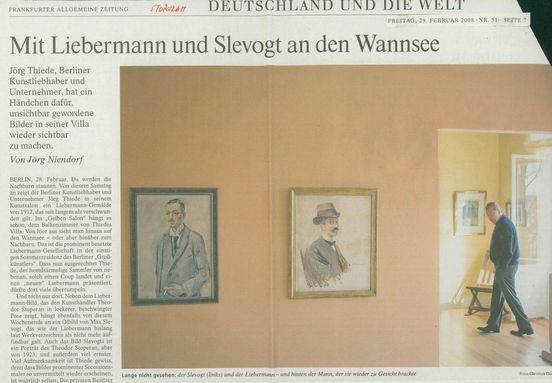| Genre | Painting |
| Materials | Oil on canvas |
| Size | 100 x 150 cm |
| Signature | signed bottom right: Müller-Kurzwelly |
Research status
Provenance is unclear and research continues.
Out of bedrooms and parlours
“Old Farmhouse on a Rügen Beach” – like the painting alongside it, “Evening Mood by the Baltic Sea” – was donated to the Berlinische Galerie in 2014 by the Berlin collector Jörg Thiede. The gift from his foundation included at least 70 works and enriched our own collection decisively with art from the dawn of the 20th century. Some of these paintings can be seen here, including “Summer Day at Sea” by Carl Saltzmann, one of the first works purchased by Thiede from the 1990s onwards.

Carl Saltzmann’s “Summer Day at Sea” was one of the first paintings bought by art patron Jörg Thiede when he began collecting.
Carl Saltzmann, Summer Day at Sea, 1908
© Copyright has expired, Repro: Kai-Annett BeckerThe focal themes of his collection were the Vereinigung der XI (an association of artists founded in Berlin in 1892) and the Berlin Secession. Jörg Thiede acquired most of his works in the 2000s from smaller auction houses or dealers in art and antiquities. Sometimes he was offered works “out of plastic bags” and many were “pictures that became invisible” in private homes, as the Frankfurter Allgemeine Zeitung reported in February 2008.

Under these circumstances, most of his acquisitions came without key provenance data. The Berlinische Galerie decided to accept the donation anyway, taking the view that a museum is – for the time being at least – the best place to retrace pathways, to research into any potential Jewish owners who suffered persecution and to identfy their heirs. The work continues.
For objects produced before 1945 that end up in private collections, questions about origins will arise increasingly in future. And that applies not only to works of art, but to any antique. Whose hands did that treasured find from a flea market pass through before the end of the Second World War?
